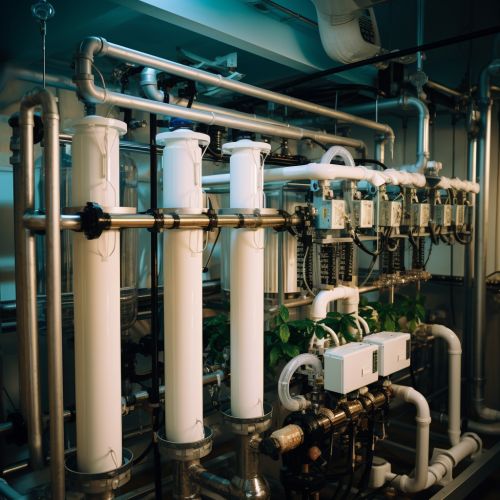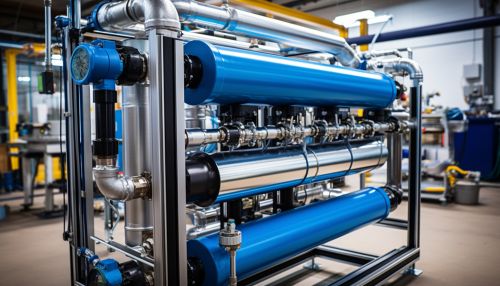Reverse Osmosis
Introduction
Reverse osmosis (RO) is a water purification technology that uses a partially permeable membrane to remove ions, unwanted molecules and larger particles from drinking water. This process is used in both industrial processes and the production of potable water.
Principle
The process of reverse osmosis requires a driving force to push the fluid through the membrane, and the most common force is pressure from a pump. The higher the pressure, the larger the driving force. As the concentration of the fluid being pushed through the membrane increases, the driving force required to continue concentrating the fluid increases.
Process
The process of reverse osmosis is not a simple one, and requires several stages for it to be effectively carried out. These stages include pre-treatment, membrane filtration, and post-treatment.


Pre-treatment
The pre-treatment process involves removing particles and chemicals that could damage the RO membranes. This includes sediment, chlorine, and other organic compounds.
Membrane Filtration
The membrane filtration stage is where the actual process of reverse osmosis takes place. The water is pushed under pressure through the semi-permeable membrane, which removes contaminants and impurities.
Post-treatment
The post-treatment process involves stabilizing the purified water to make it safe for consumption or use in industrial processes. This often involves adjusting the pH and adding minerals back into the water.
Applications
Reverse osmosis has a wide range of applications. It is used in the production of potable water, in the dairy industry, in the treatment of industrial wastewater, and in the production of certain pharmaceuticals and power.
Potable Water Production
Reverse osmosis is a common process used in the production of potable water. It is used to remove salts and other impurities from the water to make it safe for human consumption.
Dairy Industry
In the dairy industry, reverse osmosis is used to concentrate milk. By removing water from the milk, the volume is reduced, making it easier and more cost-effective to transport.
Industrial Wastewater Treatment
Reverse osmosis is also used in the treatment of industrial wastewater. It is used to remove harmful chemicals and other contaminants from the water before it is discharged back into the environment.
Pharmaceuticals and Power Production
In the production of certain pharmaceuticals and power, reverse osmosis is used to produce ultra-pure water. This water is used in processes that require a high level of purity, such as in the production of semiconductors and power plant boilers.
Advantages and Disadvantages
Like any technology, reverse osmosis has its advantages and disadvantages. It is important to weigh these when considering the use of reverse osmosis in any application.
Advantages
One of the main advantages of reverse osmosis is that it can effectively remove a wide range of contaminants from water. This includes bacteria, viruses, and chemical contaminants. It is also a relatively energy-efficient process compared to other water purification methods.
Disadvantages
One of the main disadvantages of reverse osmosis is the cost. The process requires a significant amount of energy, which can make it expensive to operate. Additionally, the process produces a large amount of waste water, which can be a concern in areas where water is scarce.
